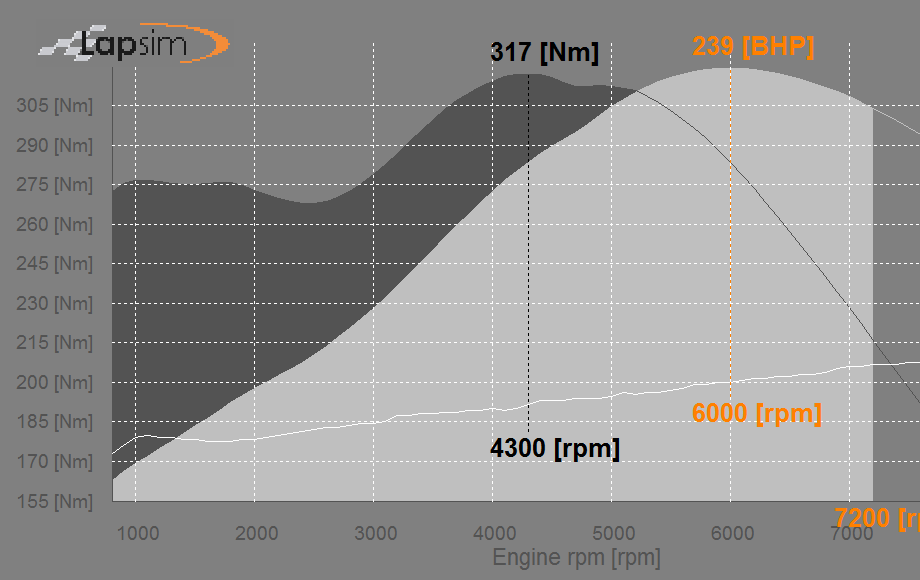Comparison with calibration data for development stages
The standard ECU was replaced with an Bosch Motorsport MS4 ECU running the Clubsport Software, in combination with a C40 logging device.
The Porsche 4 cylinder unfortunately never had the appeal the flat 6 had, but like the transaxle chassis it was mounted in, they were much better than their lack of appeal would suggest. The interesting part of the 968 engine is its extreme big bore and the fact that is has variable camshaft timing.
Bore x Stroke:
Compression ratio:
Mechanical Losses:
104 x 88 [mm] (4 Cylinder)
11.0 : 1
1.8 [Bar]
Intake Valves:
Exhaust Valves:
2 x 39 [mm]
2 x 33 [mm]
Inlet Camshaft :
Exhaust Camshaft :
226 [mm] (@ 1 [mm] lift)
218 [mm] (@ 1 [mm] lift)
Intake runner:
Primary exhaust:
350 x 50 [mm]
350 x 39 [mm]
Original engine on Bosch MS4.0, without catalytic converter

Looking at the performance of the standard 968 engine without the catalytic converter, we doubt the standard engine has the performance Porsche claimed. The torque yes, power most probably not.
In standard configuration, the engine quickly runs out of breath above 6000 rpm.
Stage 1 camshafts plus 4 in 1 headers

We increased the compression ratio to 1:12, mounted a 4 in 1 header with 44 mm internal diameter heading to free flowing exhaust.
In addition we mounted camshafts with longer duration.
Stage II outlet camshaft with stage I inlet camshaft

The next step was to mount a different exhaust camshaft, which gave significant overall improvement.
Stage II inlet and outlet camshafts

The last step was replacing the intake camshaft with one with longer duration. As can be seen in the results, it raised the top end power at the expense the of the torque and powerband.
The engine is more powerful from 5900 onwards. So it increases the performance on the racetrack. For normal road use, we would prefer the latter option.